Google July 2022 product reviews update had very little ranking volatility, say data providers
As a reminder, this update started on July 27th and ran for six days through August 2nd.
On July 27th, Google released its fourth product reviews update named the July 2022 product reviews update. That update took a short and sweet six days to roll out and was completed on August 2nd. In short, this July update was almost none existent to most of the data providers we asked, where in aggregate, there were very few signs of any real Google update during that six-day time period.
Let me add the caveat that if a site was hit by this update, it 100% felt like a major update, where the site can see traffic changes upwards of 80%. Plenty of sites were hit hard and if your site was one of them, this story is not to diminish that in any way. This story just says that it was not as widespread as previous product review updates or core updates. But in the aggregate, it seemed this update was pretty minor across Google’s search results, as a whole.
Data providers show the July update was minor
Semrush. Semrush data showed that the July product reviews update was “incredibly mild,” Mordy Oberstein, Semrush’s communications advisor said.
The change in rank volatility between the July 2022 product reviews update and the March 2022 product reviews update, the data shows that the increases are minimal. Some niches “didn’t even crack a full point increase, the highest fluctuation rate the Semrush Sensor recorded during the update,” Mordy Oberstein added.
This charge shows a comparison between the July and March 2022 product reviews updates, showing July was almost insignificant compared to March:
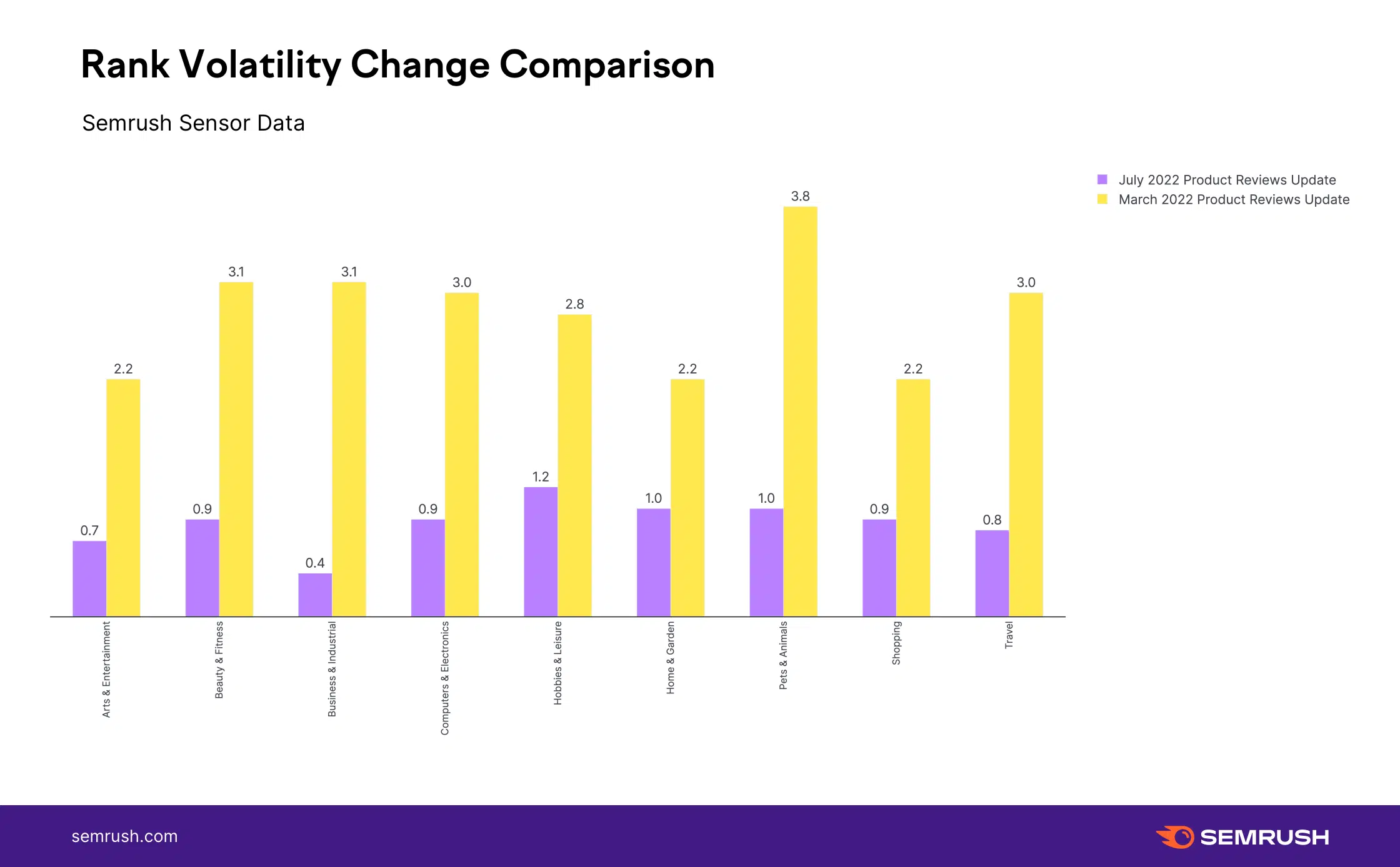
This also works when you just isolate the peak changes, the most volatile snapshot in time during the update, you really cannot compare the two. It is like the July update was nothing compared to the March update.
Here is another interesting chart showing the newly ranked URLs after each update and also the URLs not previously in the top 20. Click on each chart to expand:
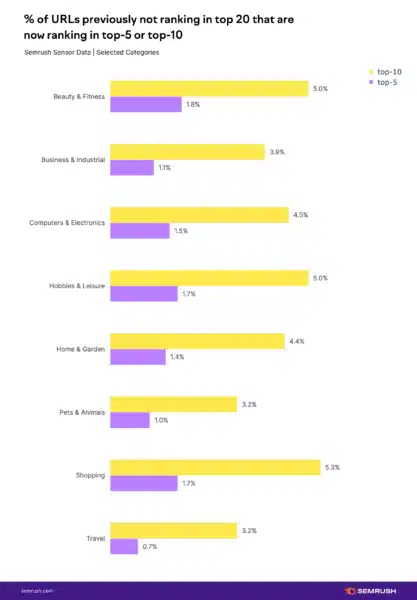
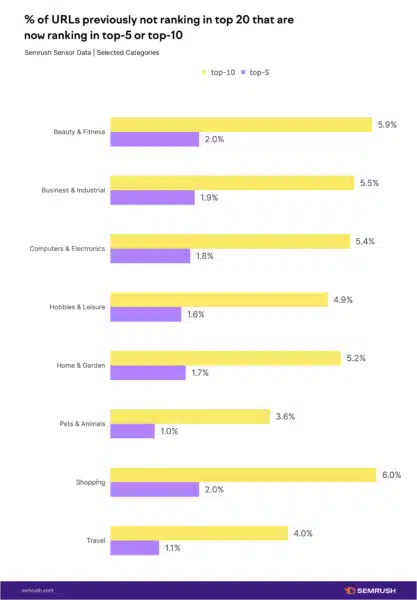
Just one note, around June 15th, Semrush updated its Sensor to adjust the levels of sensitivity it used down. Semrush confirmed this with us today but also posted about it on Twitter some time ago, which is why we asked for confirmation on this story. That being said, the other tools showed similar findings, which was very little volatility related to this update.
RankRanger/Similarweb. RankRanger, a company of Similarweb, showed similar results, where RankRanger data “didn’t see any unusual rank fluctuations,” according to Shay Harel from the company. “The latest Product Review update was pretty uneventful,” Shay Harel added. This is based on both RankRanger and SimilarWeb, RankRanger’s new parent company, data where both traffic data and rank fluctuation data show lower levels of fluctuations.
This chart below shows that the fluctuations and volatility during the period of time of the July 2022 product reviews update were limited, to say the least:

Now that RankRanger has Similarweb, they can now also compare traffic from Google Search to compare on that level. And that also showed that the December update was larger than the July update:

RankRanger compared this July update with the December update, not the March one. So keep that in mind, since Semrush compared it to the March update, which was the most recent one we had prior to this July update.
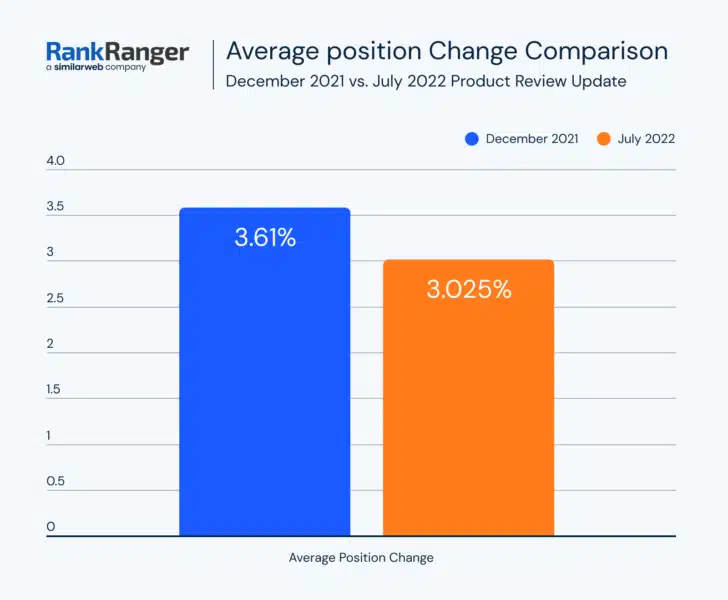
Now broken down by position, you see a similar picture:
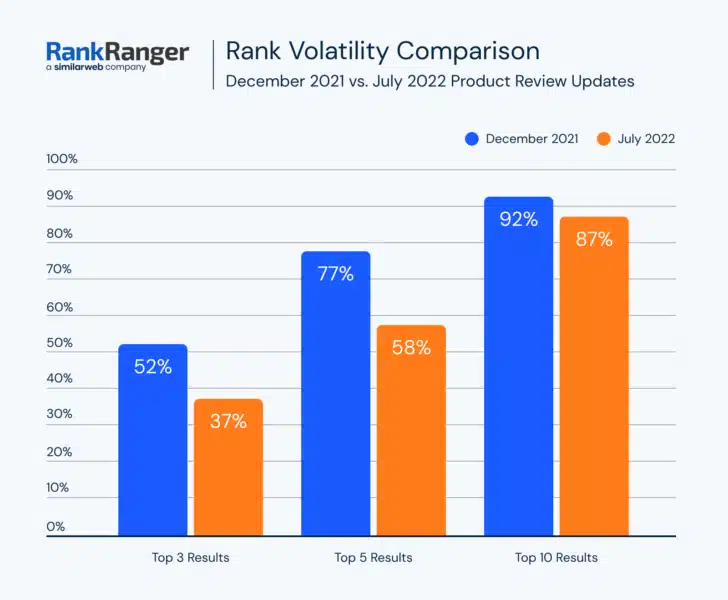
RankRanger also showed the volatility by niche for this last update:
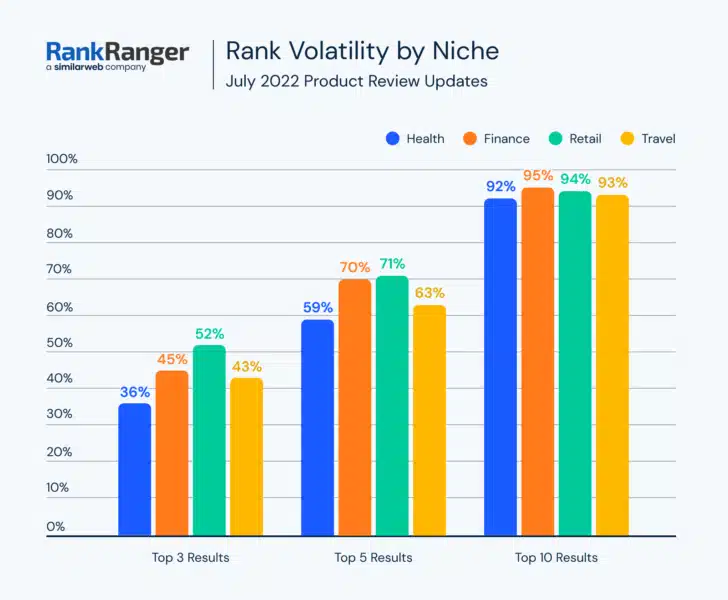
Here are some top winners and losers from Similarweb’s data:
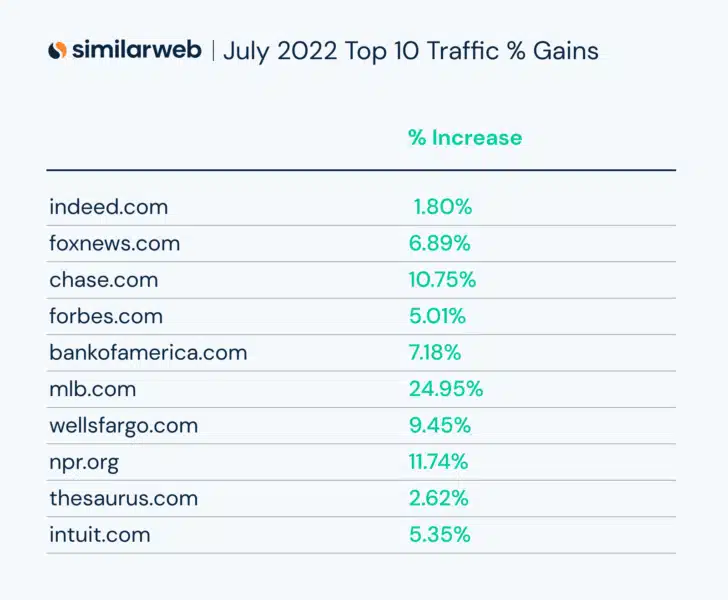
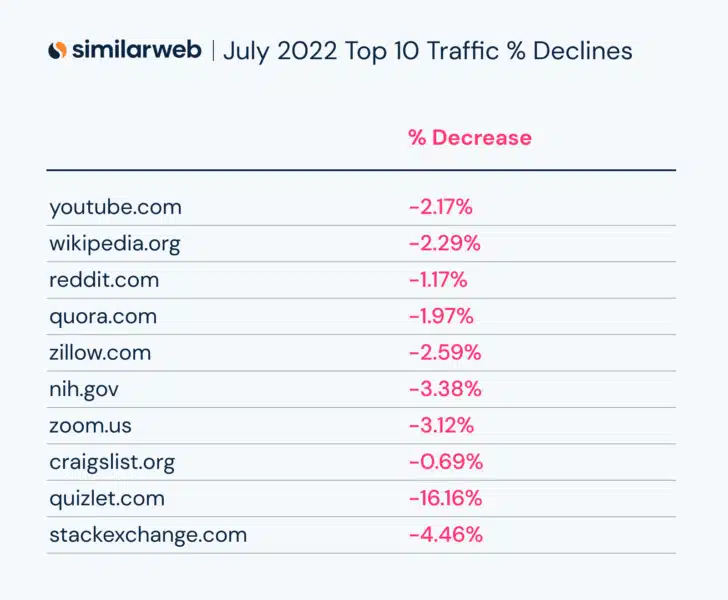
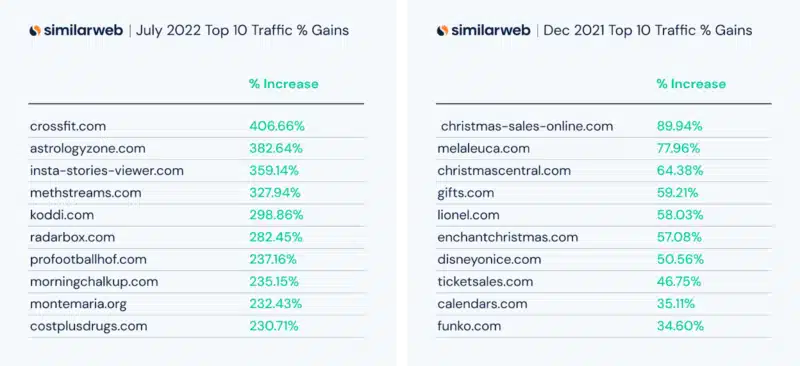
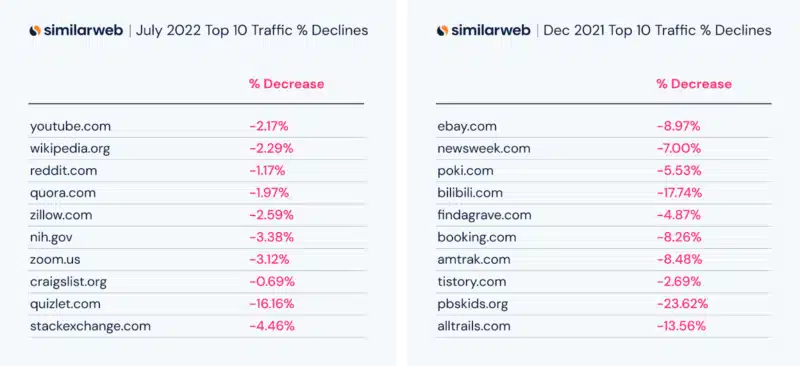
Sistrix. Again, the data shows the same story, “after an initial analysis it’s clear that this update did not have a major impact on SERPs,” Steve Paine from Sistrix told us. Sistrix sent us a few examples of sites that did see movement both up and down after this update:
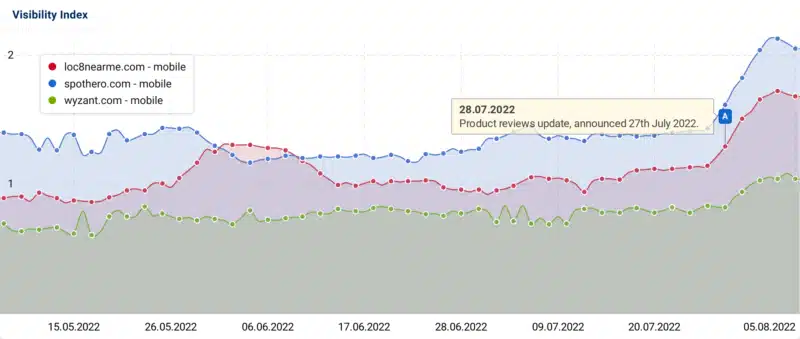
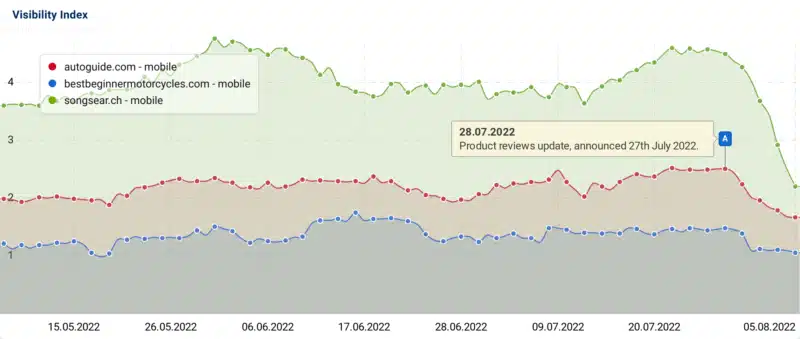
seoClarity and Moz. Both of those toolset providers told us they saw very little, just like the toolsets above. “Our internal tools are showing minimal changes,” Mitul Gandhi from seoClarity told us. He added that it is “hard to tell in a quick view anything more than standard fluctuations.” Dr. Pete Meyers from Moz also told me that he was unable to pin down a lot on this last update, saying there is not much to see with this update.
More on the July 2022 product reviews update
Google product reviews update. The Google product reviews update aims to promote review content that is above and beyond much of the templated information you see on the web. Google said it will promote these types of product reviews in its search results rankings.
Google is not directly punishing lower-quality product reviews that have “thin content that simply summarizes a bunch of products.” However, if you provide such content and find your rankings demoted because other content is promoted above yours, it will definitely feel like a penalty. Technically, according to Google, this is not a penalty against your content, Google is just rewarding sites with more insightful review content with rankings above yours.
Technically, this update should only impact product review content and not other types of content.
July 27 to August 6. This July 2022 product reviews update only took six days to fully roll out and to be honest, that is surprising. We saw very limited changes from the tracking tools and honestly, while some sites seemed to get hard by this update, it does not seem there was a lot of SEO community chatter around ranking changes due to this update. In fact, we saw a spike on August 3rd but clearly, that was after this update was complete.
What to do if you are hit. Google has given advice on what to consider if you are negatively impacted by this product reviews update. We posted that advice in our original story over here. In addition, Google provided two new best practices around this update, one saying to provide more multimedia around your product reviews and the second is to provide links to multiple sellers, not just one. Google posted these two items:
- Provide evidence such as visuals, audio, or other links of your own experience with the product, to support your expertise and reinforce the authenticity of your review.
- Include links to multiple sellers to give the reader the option to purchase from their merchant of choice.
Google added the following criteria for what matters with the March 2022 product reviews update:
- Include helpful in-depth details, like the benefits or drawbacks of a certain item, specifics on how a product performs, or how the product differs from previous versions
- Come from people who have actually used the products, and show what the product is physically like or how it’s used
- Include unique information beyond what the manufacturer provides — like visuals, audio or links to other content detailing the reviewer’s experience
- Cover comparable products, or explain what sets a product apart from its competitors
Google added three new points of new advice for this third release of the products reviews update:
- Are product review updates relevant to ranked lists and comparison reviews? Yes. Product review updates apply to all forms of review content. The best practices we’ve shared also apply. However, due to the shorter nature of ranked lists, you may want to demonstrate expertise and reinforce authenticity in a more concise way. Citing pertinent results and including original images from tests you performed with the product can be good ways to do this.
- Are there any recommendations for reviews recommending “best” products? If you recommend a product as the best overall or the best for a certain purpose, be sure to share with the reader why you consider that product the best. What sets the product apart from others in the market? Why is the product particularly suited for its recommended purpose? Be sure to include supporting first-hand evidence.
- If I create a review that covers multiple products, should I still create reviews for the products individually? It can be effective to write a high-quality ranked list of related products in combination with in-depth single-product reviews for each recommended product. If you write both, make sure there is enough useful content in the ranked list for it to stand on its own.
Why we care. If your website offers product review content, you will want to check your rankings to see if you were impacted. Did your Google organic traffic improve, decline, or stay the same? Long term, you are going to want to ensure that going forward, you put a lot more detail and effort into your product review content so that it is unique and stands out from the competition on the web.
We hope you, your company, and your clients did well with this update.
Related stories
New on Search Engine Land